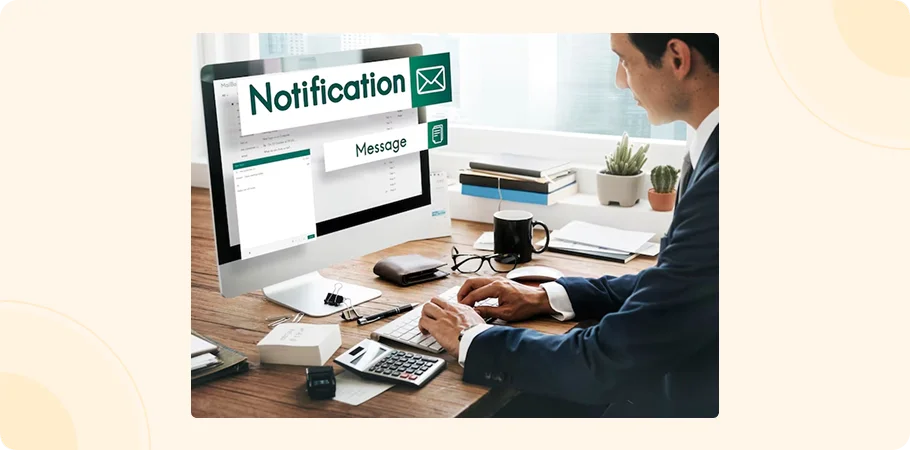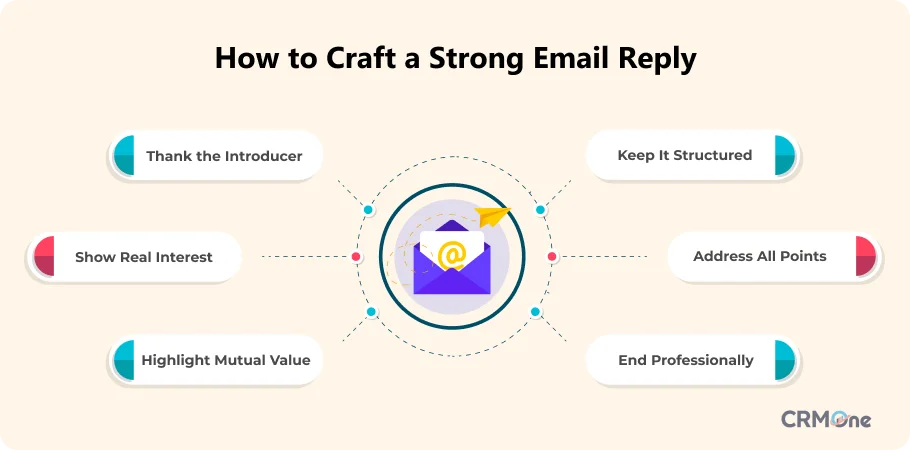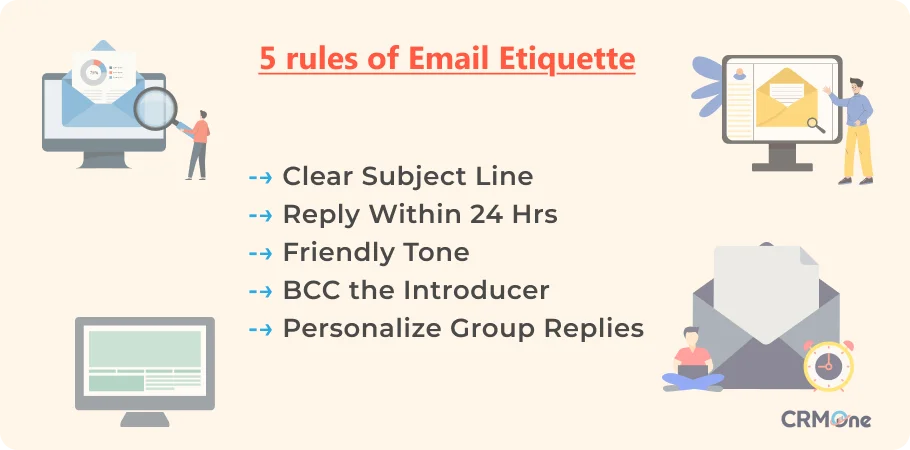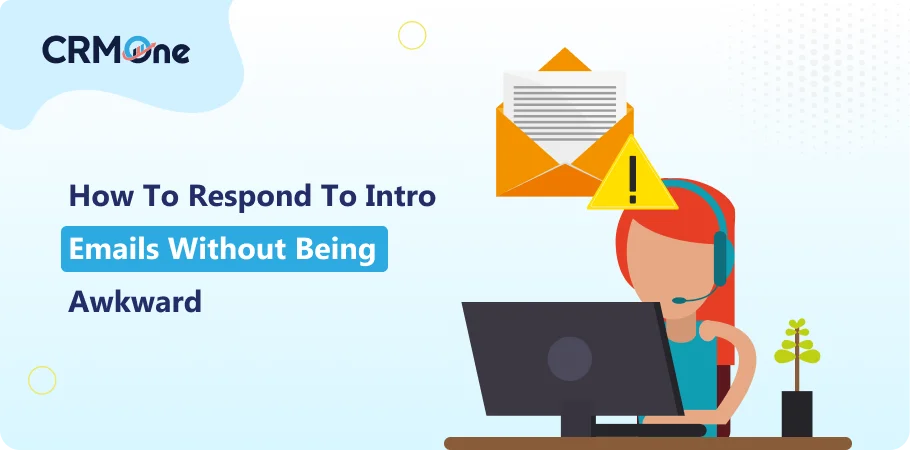An introductory email defines your brand values and how you want to carry the conversation forward. Once you receive an introduction email, you will be eager to take the next step. You cannot put in generic things; that’s a BIG NO!
Take time, express interest, understand what they have to say, what they are offering, and how it can be beneficial to you. Thoughtful replies like found in sample customer service email templates is very important to analyze and then reply. This will set the course of future business just right.
Being professional is one thing, and keeping the conversation ongoing while still balancing the marketing tactics and building a relationship is compulsory. Not just customers but even providers and business partners love personalization. Knowing how to respond to an introduction email with proper use of professionalism and authenticity can set the tone for a lasting connection.
Why Introduction Emails Matter?

Every business has its own way of sending introduction emails. When you receive one, first define the values it brings and how it can be taken further. The intent is very important; it lets you plan for future steps.
1. Professional Networking
These are sent to connect professionals and facilitate a new connection who may benefit from knowing each other, such as those with shared interests, complementary skills, or mutual goals. If there’s a delay in connecting then you can politely mention “sorry for the inconvenience” to keep it respectful.
2. Job Referrals or Career Opportunities:
Introducing a job seeker to a potential employer, recruiter, or someone influential in the respective field.
3. Business Partnerships:
This one is to connect representatives from different organizations or teams to explore partnerships, joint ventures, or collaborative projects.
4. Sales Prospecting:
These emails are sent by sales professionals to reach out to prospective clients or decision-makers. It aims at starting a conversation leading to a sale or business deal.
5. Mentorship:
It introduces someone seeking mentorship, advice, or guidance to an experienced professional or industry leader.
6. Event Introductions:
Introduction emails may be used to connect individuals ahead of an event, conference, or group project, helping attendees or team members get acquainted.
How to respond to an Introduction Email?
There are many emails in our inboxes that are left unopened. If you are a customer, then that’s okay because you are simply not interested. But if you are a working professional, then even if what others are offering is not of interest, you have to reply politely with professionalism.
However, if the email you received is of interest to you, then reply promptly. This will demonstrate enthusiasm and respect. It depends on your reply whether you are looking for a valuable partnership, collaboration, or client relationship.
Express gratitude to the person who sent the introduction email. Acknowledge the introducer to ensure that their network is in good hands.
Key Elements of a Strong Response Email

Thank the introducer
They took time to write the email and add elements that serve you best. Acknowledge their efforts and reply with a thoughtful response and gratitude. ‘Thanks, Jennifer, for this. I am really looking forward to it.’ Or if there is something that you are not sure of, then ‘I appreciate it. And before moving further, I would love to discuss this with my Team.’
Be polite and mix it with professionalism. Make them understand that you are delighted to receive the mail.
This will set the tone right for future interactions. Here’s a short version of Thank you for the introduction email:
Subject: Thank You for the Introduction!
Hi [Introducer’s Name],
Thank you for connecting me with [Recipient’s Name], I truly appreciate it.
[Recipient’s Name],
[Brief sentence about your interest/goals: e.g., “I’d love to discuss [topic/opportunity] and explore synergies.”]
Are you available for a [call/meeting] on [date/time options]?
Best regards,
[Your Name]
Feel excited about connecting with the new contact
Be genuine with what you reply. First, read the introduction email thoroughly. Find out what’s there to like for you. Is it everything or just some part of it?
Avoid generic phrases like ‘Nice to meet you.’ Instead, use this: ‘I’ve been eagerly following your work on [specific project]—your approach to [specific detail] is ground-breaking!’
Show how their work or values resonate with your goals, passions, or expertise. Demonstrate that you’ve researched their work and aren’t offering empty praise:
Position your enthusiasm as a two-way value exchange:
‘I believe combining your [skill/experience] with my [related skill/experience] could lead to [specific outcome].’
Well-Organized Structure
Prefer to use short paragraphs to separate distinct ideas and use bullet points to highlight key details, deadlines, or action items. Critical information should be well-readable.
For complex topics, consider using subheadings or bold text to emphasize priorities. For example, a project update email might include sections like ‘Immediate Action Required’ and ‘Timeline Adjustments.’
Address All Questions and Action Items
The one who has sent the introduction email definitely wants you to address the questions. So do it with a direct answer. This will build trust and avoid miscommunication.
If a query requires further research, acknowledge it explicitly. ‘I’ll investigate X and revert by Friday.’
When outlining the next steps, use action-oriented language: ‘Please submit the budget by EOD Wednesday’ or ‘I’ll coordinate with the legal team and share updates by 5 PM today.’
Professional Closing and Signature
At last, use closings like ‘Best regards’ or something else to end on a courteous note. Avoid using overly casual phrases.
Sign the email including your full Name, job title, Company, and direct contact details. This will build credibility.
Email Etiquette Tips

Use a Clear, Descriptive Subject Line
Subject lines are your main weapon for any kind of email. They spark curiosity and trigger the readers to open the email. A vague subject line is not required here.
Be specific; use something like, ‘Great to connect’ or ‘Looking forward to this amazing opportunity.’
Respond Promptly to Show Respect for Everyone’s Time
The best time is to reply within 24 hours, as it is considered a good practice . This shows professionalism and consideration for the Recipient’s priorities. Even if you need more time to address the questions being asked, send an acknowledgment email.
I’ve received your query and will follow up by EOD Thursday.’ prevents frustration and builds trust.
Use a Friendly, Authentic Tone! Avoid Sounding Robotic or Overly Formal
It’s very important to have a good manner in which you talk. It has to do with the reputation of the company you are associated with.
For example, instead of writing, ‘Per your request, enclosed herewith is the document,’ opt for, ‘Here’s the report you asked for—let me know if you need anything else!’
Boost Your Business
Performance with CRMOne
Our experts will guide you through the most effective
ways to use CRMOne,
ensuring you fully leverage its
features for maximum impact on your business.
Move the Introducer to BCC after the first reply to align future communication.
When someone introduces you via email, include them in the initial reply to maintain transparency. After the first conversation, move them to BCC to prevent their inbox from being filled with threads. This shows that you respect their time and want them to stay updated.
For example, if James introduces you to Chris, your second email to Chris should BCC James unless their active participation is required.
Personalize Your Message for Group Introductions or Multiple Recipients
If you are about to email multiple recipients, address each person’s Role or interest differently. This shows that you have researched their respective roles and contributions to this project well.
Max, I’ve included you for your UX expertise,’ or ‘Sophie, your feedback on the budget would be invaluable.
Avoid these:
Stop using only last names. Either use first names or full names. Avoid any unnecessary apologies that undermine confidence. Double-check names, titles, and pronouns to avoid any accidental offense.
Also read: How to write cold emails
Templates & Real Examples of how to reply to an email introduction
Your response sets the tone for future relationships, not defining what the purpose is; your tone still matters a lot. When it comes to how to reply to an email introduction, I have prepared different scenarios in the template. These can be customized directly, and you can send them to the desired person.
1. General Business Networking
Subject Thank you for the introduction email
Hi [Name],
Thank you for the introduction email, [Introducer’s Name]. It’s nice to connect with you, [Recipient’s Name].
I’ve heard great things about your work in [industry/field]. I look forward to learning more and seeing how we can collaborate.
Best regards,
[Your Name]
2. Job Referral or Recruiter Introduction
Subject Referring to Job
Dear [Name],
Thanks for the introduction, [Introducer’s Name]. [Recipient’s Name], I appreciate you connecting with me.
I see you’re looking for someone with experience in [skill/industry]. I’d love to share my background and discuss how I can help your Team.
Let me know a good time for a call.
Best,
[Your Name]
3. Sales or Business Development Leads
Subject Exploring Opportunities Together
Hi [Name],
Thank you for the introduction email, [Introducer’s Name]. [Recipient’s Name], I’m eager to connect and learn about your needs at [Company].
I’d be happy to share how our solutions at [Your Company] can assist you.
Would you be open to a virtual meeting or quick call this week?
Looking forward to your response,
[Your Name]
4. Media or Influencer Outreach
Subject Great to Connect!
Hi [Name],
Thank you for the introduction, [Introducer’s Name]. [Recipient’s Name], I’ve been following your work and am impressed by your recent [project/post].
I’d love to discuss a potential collaboration or feature. Please let me know if you’re interested in chatting further.
Best,
[Your Name]
5. Group Introductions
Subject Excited to Collaborate
Hi [Name],
Thank you, [Introducer’s Name]. I’m excited about the opportunity to work with all of you.
Perhaps we could set up a group call next week to discuss our project plans? Please share your availability.
Best regards,
[Your Name]
6. New Employee or Team Member Introduction
Subject Hello from [Your Name]
Hi Team,
Thank you for welcoming me! I’m [Your Name], the new [Role].
I look forward to working with everyone and contributing to our shared goals. If you have any advice or favorite lunch spots, I’m all ears!
Best,
[Your Name]
7. How to Introduce Your Company Via Email Sample
Subject Introducing [Your Company], Let’s Connect
Dear [Name],
I hope you are well. I’m [Your Name] from [Your Company].
We focus on [brief description of services/products]. I’d like to see how we can help your business.
Let me know if you’re open to a quick call to chat more.
Best regards,
[Your Name]
8. Awkward Response to Hear When You Introduce Yourself
Awkward reply:
Remind me again—how do we know each other?’
How to respond:
Hi [Name],
Thank you for your reply. We were introduced by [Introducer’s Name], who thought we might have some shared interests in [topic/industry].
I’m happy to share more about my background and why I reached out. Looking forward to connecting!
Best,
[Your Name]
Example of Professional Introductions
If you’re searching for examples of professional introductions or an email sample for introducing yourself, here’s a template that you can customize and use.
Subject: Introduction – [Your Name], [Your Role/Company]
Dear [Name],
I’m [Your Name], a [Your Role] at [Company] and currently on a job search .
I found your profile via [mutual contact/event]. I was impressed by your work in [field]. I’d like to connect and explore possible synergies.
Best,
[Your Name]
Tips:
- Respond promptly to show you value the connection.
- Express genuine gratitude (e.g., thank you for the introduction email).
- Personalize your message by referencing details from the introduction.
- Suggest a next step, such as a call or meeting.
- Keep your tone professional but approachable.
You don’t have to do these:
Impersonal messages
There is no place for impersonal emails; showing genuine interest in your contacts is essential . Everyone loves to feel valued, and there is no harm in giving them that respect. When the common goal is to benefit from the relationship that you are building, then personalization becomes a key factor.
Addressing by name and sending an email apart from any work but still maintaining professionalism all accounts for the betterment of the business.
Lack of clarity on next steps
You know what they do in sales email, right? Placing a CTA at the end so the recipient knows what the next steps are.
The same goes for business emails, maintaining clarity for further actions. Don’t end without mentioning anything about what to do next. Don’t play with guesswork; this would waste time.
Be on the same page
Discussing just about your own benefits is not a progressive conversation. Listen to what they are saying or offering, and have a discussion with your Team. Reach to the point where you both get mutual advantages.
Continue showing interest in their services. This will maintain enthusiasm from the start to ending. Only talking about your interests infused negativity.
Don’t expect too much!
The excitement of receiving an email from the business that you have always wanted to do a deal with is understandable. But do not push it off the limits.
A lack of patience is a huge mistake when seeking a mutually beneficial relationship . The over-eagerness might give a skeptical hint. Hence, let the connection be nurtured naturally.
Conclusion
I hope the explanation of how to reply to an email introduction has been covered well. You don’t have to do in-detail strategic work. Rather, understand the requirements and plan accordingly.
The essential elements should be personalization, replying early, getting to the point, paying attention to every detail, etc. Building a business relationship doesn’t take extra effort but co-ordination among teams and collaboration with partners.
FAQs
-
Should you reply-all or BCC the introducer?
Reply to keep everyone updated. Then, after your thank you, move the introducer to BCC so they don’t get future messages.
-
How soon should you respond?
Respond within 24 hours to show you value the introduction and respect everyone’s time.
-
What if you’re not interested in connecting?
Thank both parties for the introduction. Then, say it’s not the right time for you. Wish them all the best.
-
Should you always thank the introducer?
Thank the introducer first. This shows you appreciate their effort and helps keep goodwill.
Get started for Free
Start for free today. Boost your sales by clicking the Get Started button. With CRMOne, you can manage leads, sales, and customer service all in one place.

